I took advantage of a spring minus tide to explore an interesting historical feature along the Bellingham waterfront and to investigate how the intertidal denizens were faring in and around this feature. As you will see, this is not a pristine Salish Sea beach, as if there were such a thing anymore. However, in spite of 150 years of habitat trashing, there remains a remnant of an earlier ecosystem.
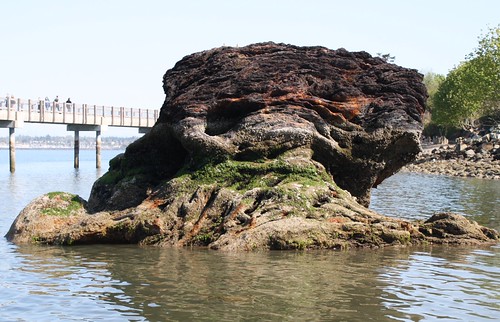
The big tin rock
The Daily Bucket is a regular feature of the Backyard Science group. It is a place to note any observations you have made of the world around you. Insects, weather, meteorites, climate, birds and/or flowers. All are worthy additions to the bucket. Please let us know what is going on around you in a comment. Include, as close as is comfortable for you, where you are located. Each note is a record that we can refer to in the future as we try to understand the patterns that are quietly unwinding around us.
|
Join me below the tangle of orange bull kelp to explore this bit of beach.
First is a photo of what appears from shore and from the over-water walkway to be a large boulder set just off shore. One can walk out to it at a minus or very low tide. This structure is in reality a pile of scrap tin discarded from a warehouse that manufactured tin cans for the Washington and Alaska fish canneries around the turn of the last century. The pile is from the “Pacific Sheet Metal Works” that operated on the Bellingham/Fairhaven waterfront between 1896 and 1906. The tin pile sits atop of some Chuckanut Sandstone.
The next photo shows the metal works warehouse where you can see the pile developing and the door through which the scrap was pushed out into the water. Yup, everything was just pushed into the bay.

The photo was taken somewhere about the turn of the last century and therefore is at least 110 years old. Another prominent feature of the shoreline is the presence of a railroad track, both then and now. This next shot is taken from the tracks as close to the same spot where the old one was taken as I could determine.

The tin pile remains a rusting hulk covered by barnacles and various sea weeds. Around it are the remains of the pilings that supported the original buildings. They too are encrusted with mussels and barnacles.

This tin pile has some interesting striations and a bit of patchwork of layers of tin scraps piling up over the years.
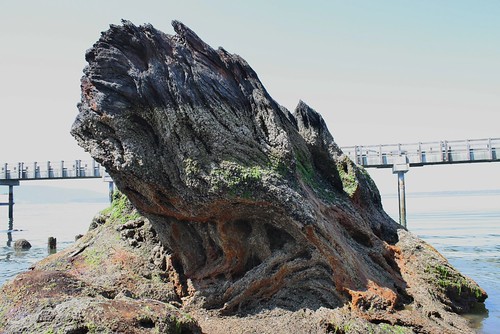
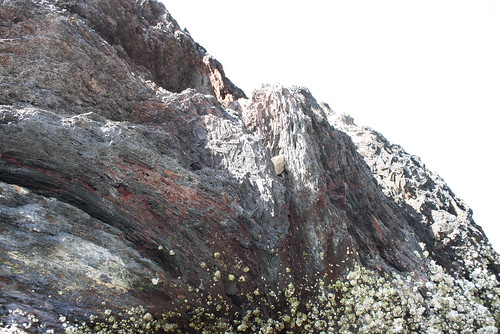
And now for the Beach and the sea life
As noted, this beach has been in an industrial zone for well over 100 years. Although it is now part of a city park it remains adjacent to the urban population.
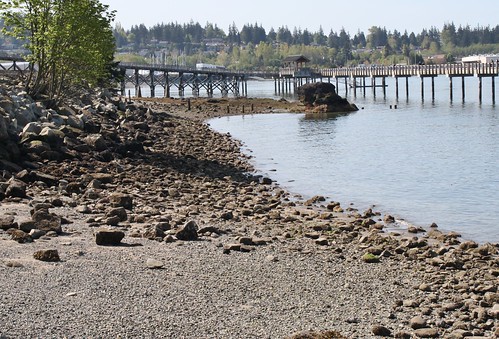
The little stretch of beach examined here.
Below are some close-ups of the beach and what I found around the “rock.”
I was very pleasantly surprised to see at the foot of the scrap heap, a sea star tucked into a wet hidey-hole with just a bit protruding. A baby sea star and the recently molted carapace of a Dungeness crab.

Crab carapace on the left and small sea star on the right.

Another sea star found at the foot of the tin pile.
As many of you know that past two years have been devastating for the sea stars which have been dying from a wasting syndrome all up and down the Pacific coast. I don’t know if these are survivors or new ones. These and the other four that I saw were smaller than I expected, so perhaps they are new ones.
As encouraging as it is to see these few sea stars on this beach, they remain rather sparse relative to what has been the norm here in recent years. The next two photos were taken close by a few years back when the sea stars were plentiful.
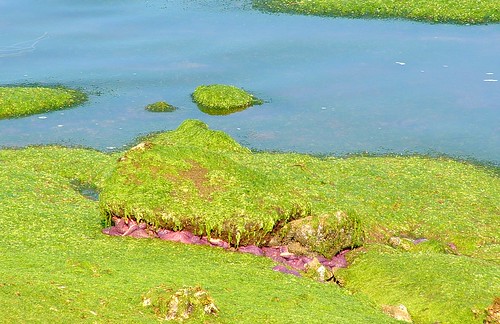

This beach, like most northwest beaches is rocky or pebbly and is littered with empty shells of a variety of shore critters. In the following photos are shown more crab carapaces, cockle, oyster, clam, and mussel shells. And even a couple of live oysters. The live clams are under the sand and gravel.
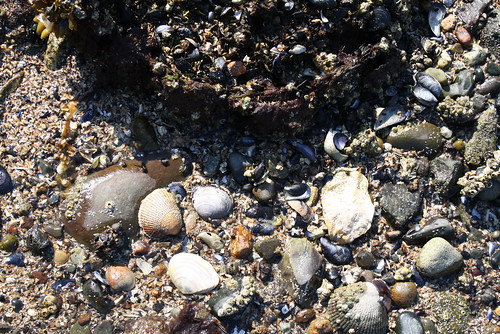

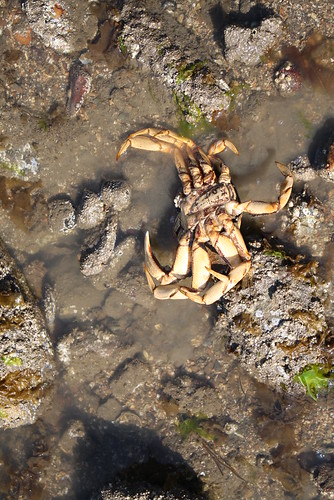
While this beach is not a pristine natural beach, it is what is left after several assaults over the past 100 plus years. First was probably the railroad that blasted through in the mid to late 1800s. Then came the seafood and salmon packing canneries and warehouses. These industries were more recently replaced by the hotels and condominiums that line the shore just a few hundred feet from the tin rock beach. Given this beach’s history, I find it remarkable that there are still beach critters more or less surviving here.
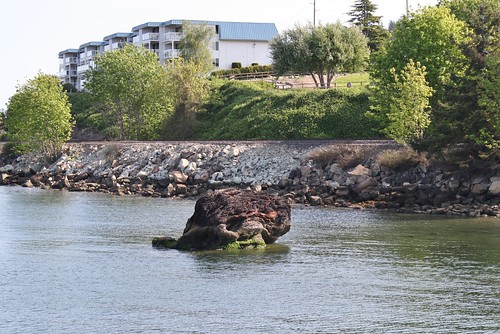
Condominium to the northeast.
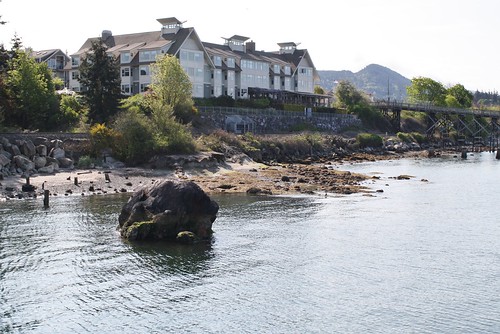
Hotel to the southeast
In many of the photos you can see pieces of the over-water trestle that is part of a city parks project that creates trails through the community. This one is part of the South Bay Trail that runs from downtown Bellingham through Boulevard Park and on to the Fairhaven Historical District. The following photo shows a bit more of its expanse across the water. Fortunately, there will be little, if any more development along the shore here as it is now largely park space, except for the railroad and its right of way.
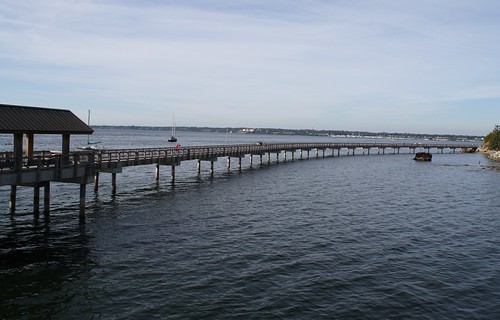
The main polluters and environmental dangers to this beach and shoreline area now are the numerous coal and crude oil trains that ply these tracks many times each day leaving remnants of coal dust, diesel fumes, and the potential of oil spills.

A coal train from the Powder River mines of Wyoming

"Spotlight on Green News & Views" will be posted by Meteor Blades every Saturday at 1:00 pm Pacific Time and every Wednesday at 3:30 Pacific Time on the Daily Kos front page. Be sure to recommend and comment in the diary.
**
Now It's Your Turn. What have you noted happening in your backyard or your travels? As usual post your observations as well as their general location in the comments.
Show us some of your local animal habitat.


